Alphabet Recognition Cursive Alphabet Worksheets for Ages 5-9
7 filtered results
-
From - To
Enhance your child's cursive handwriting skills with our Alphabet Recognition Cursive Alphabet Worksheets, designed specifically for ages 5-9. These engaging worksheets combine fun activities with essential learning, helping kids recognize and write each letter in cursive. Our thoughtfully crafted exercises promote letter formation, improve fine motor skills, and ignite creativity. With themed illustrations and aligned learning objectives, these worksheets foster independent practice and build confidence in young learners. Ideal for use at home or in the classroom, our Alphabet Recognition Cursive Alphabet Worksheets make mastering cursive writing an exciting and enjoyable experience for every child! Start your child’s cursive journey today!
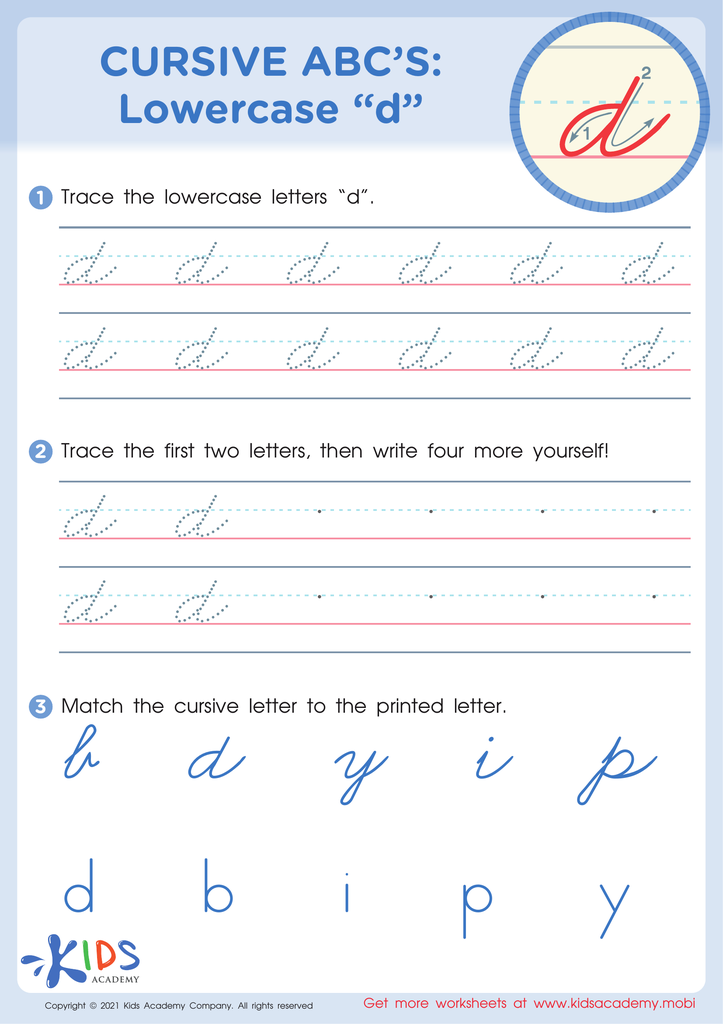

Cursive ABCs: Lowercase d
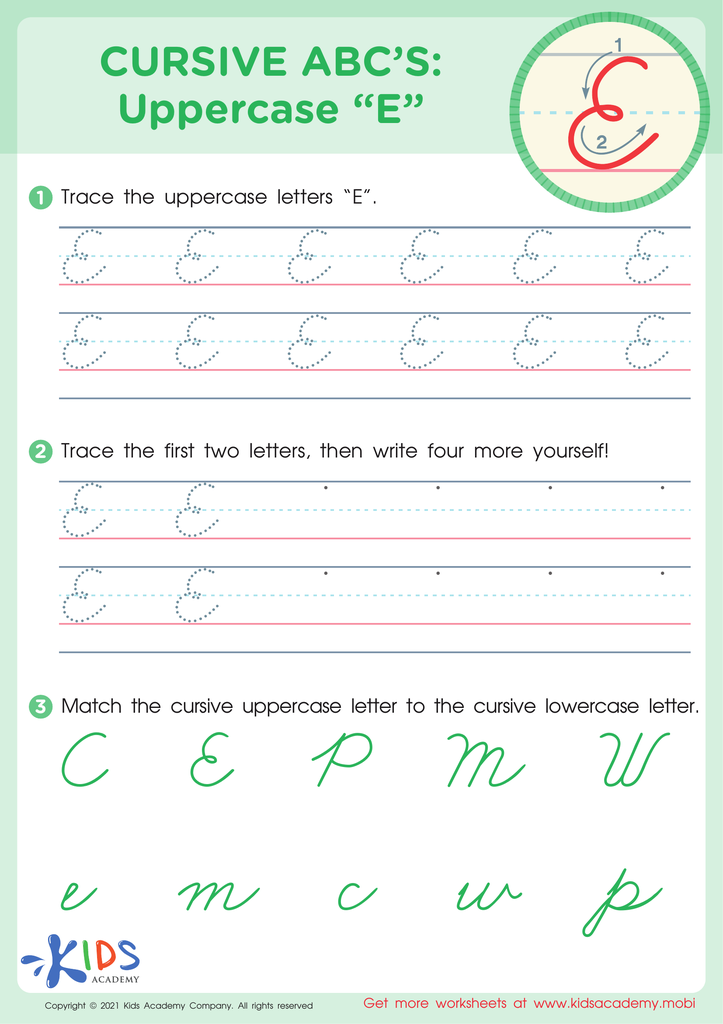

Cursive ABCs: Uppercase E
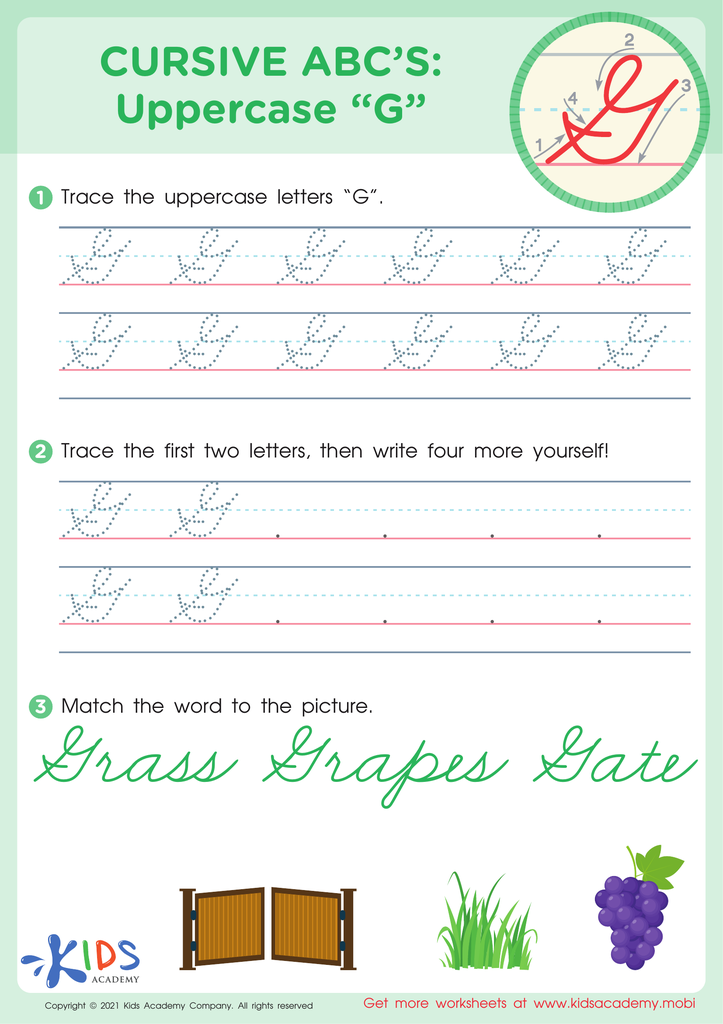

Cursive ABCs: Uppercase G
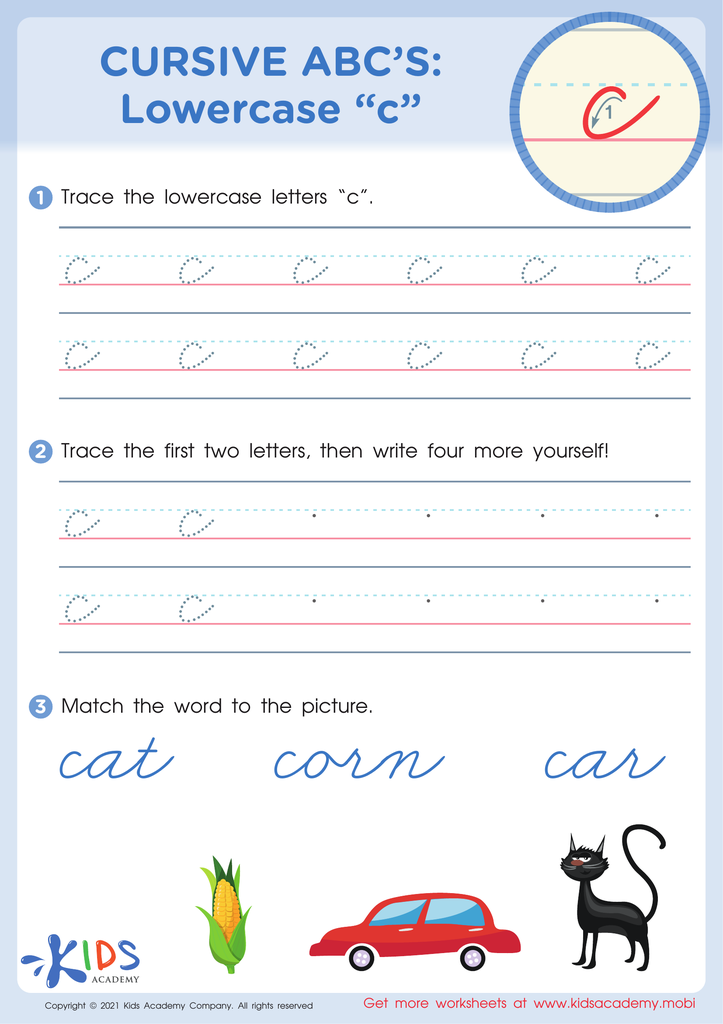

Cursive ABCs: Lowercase c
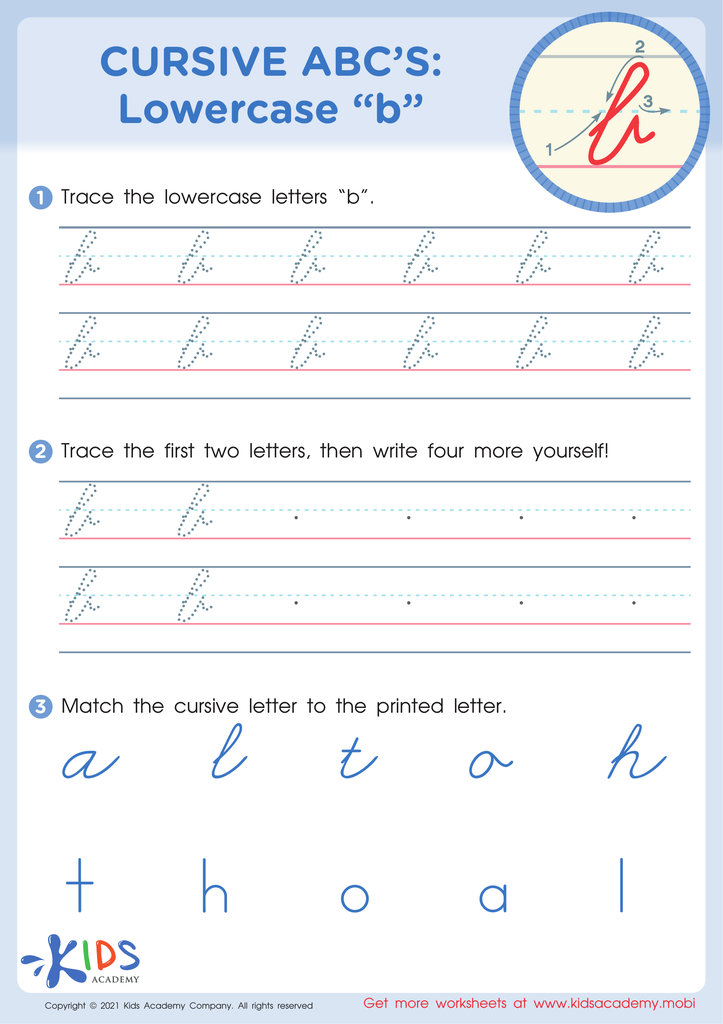

Cursive ABCs: Lowercase b


Cursive ABCs: Uppercase A
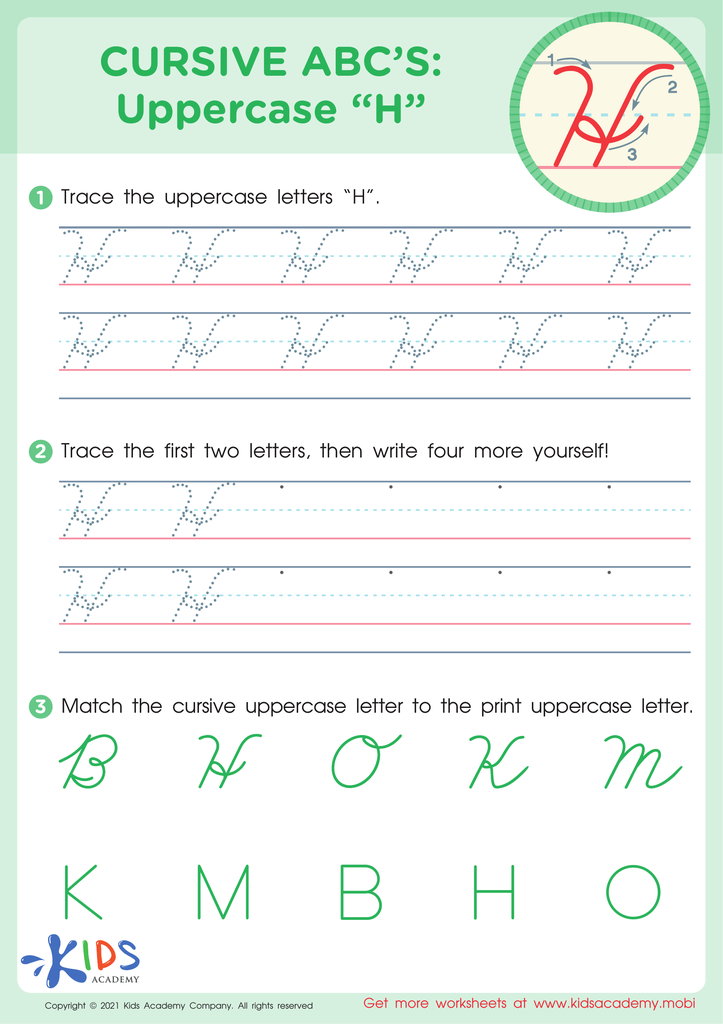

Cursive ABCs: Uppercase H
Alphabet recognition, especially in cursive, is an essential skill for children aged 5 to 9 years. Mastering cursive not only contributes to handwriting development but also plays a crucial role in cognitive progress and fine motor skills. Firstly, cursive letters are often linked more closely to personal expression as they offer a unique, individualized way to write. This personal aspect makes learning cursive more engaging and can enhance a child’s connection with writing.
Moreover, scholars have noted that cursive writing can improve reading abilities through phonetic awareness, as the fluid movements involved in cursive writing can reinforce letter shapes and sounds. This intersection enhances vocabulary building and literacy skills overall.
Additionally, in today’s digital age, where typing is predominant, cursive still holds significance, particularly in crafting personal letters and signing documents. These practical skills prepare students for real-world applications, fostering their independence.
When parents and teachers prioritize cursive alphabet recognition, they not only equip children with vital academic skills but also enhance their confidence and enthusiasm for writing. Ultimately, a strong foundation in cursive benefits cognitive, social, and emotional development, making recognition of the cursive alphabet a valuable focus for early learners.












